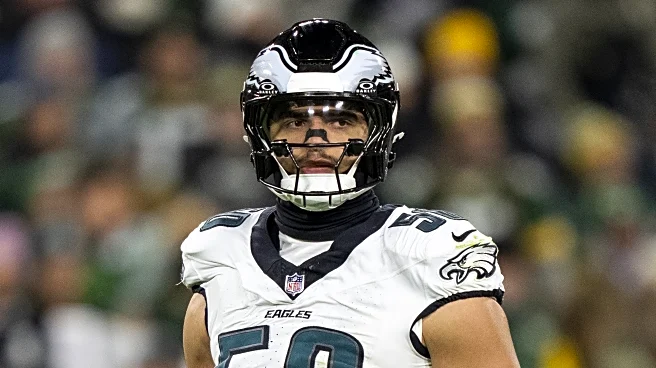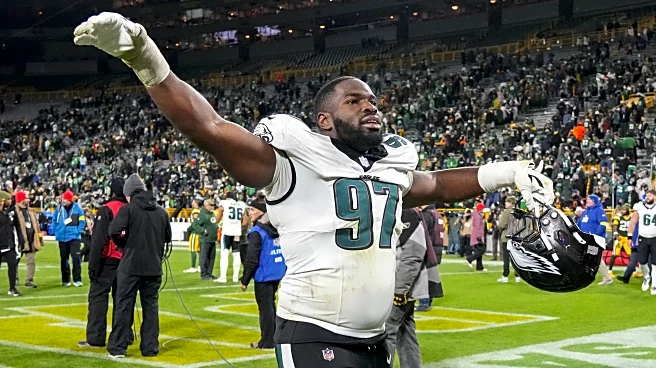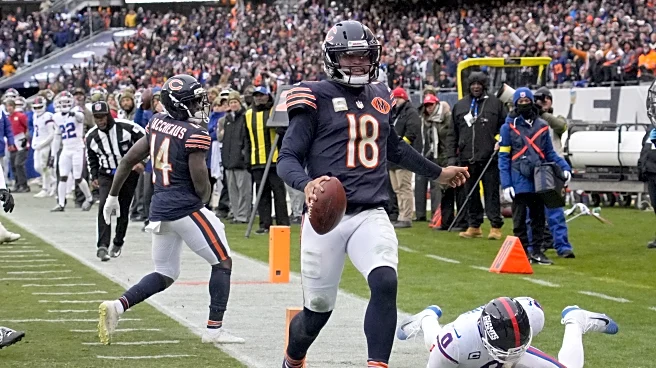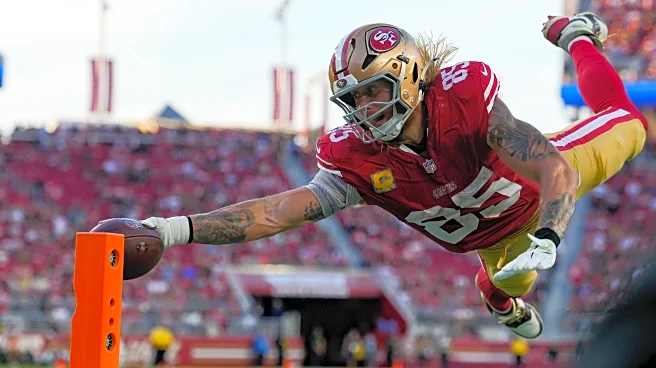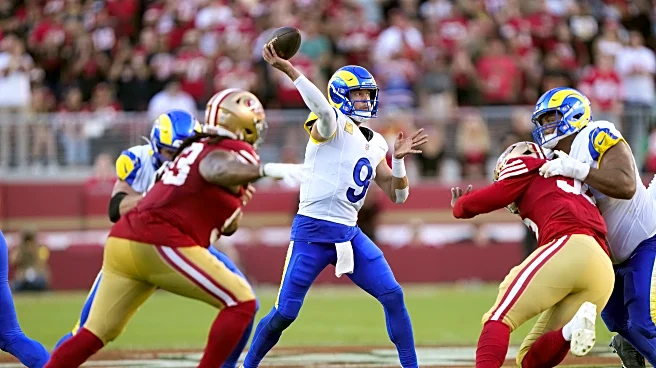What's Happening?
The Detroit Lions, led by quarterback Jared Goff, have been a formidable force in the NFL, particularly due to their offensive strategy that emphasizes speed and mistake-free play. Goff's performance has been notable, with the sixth-lowest air yards per attempt
but the ninth-most passing yards, highlighting the team's effectiveness in yards after catch (YAC). However, the Lions have faced challenges when their offensive rhythm is disrupted, as seen in losses against the Packers, Chiefs, and Vikings. In these games, Goff was sacked 10 times, and the Lions struggled with negative EPA per rush, exposing weaknesses in their offensive line's interior.
Why It's Important?
The Lions' offensive strategy has positioned them as a strong contender in the NFL, but their vulnerability to disruptions could impact their playoff aspirations. The team's reliance on Goff's passing and YAC efficiency means that any defensive pressure can significantly affect their performance. This has broader implications for their standing in the league, as consistent offensive disruptions could hinder their ability to compete against top-tier teams. The Lions' ability to adapt and strengthen their offensive line will be crucial in maintaining their competitive edge.
What's Next?
The Lions will need to address their offensive line issues to prevent further disruptions in their gameplay. Upcoming matches will test their ability to maintain their offensive strategy against teams with strong defensive capabilities. The Lions' coaching staff may need to implement adjustments to their play-calling and protection schemes to safeguard Goff and enhance their rushing performance. These changes will be vital as the team aims to secure a playoff spot and contend for the Super Bowl.
Beyond the Headlines
The Lions' situation highlights the importance of adaptability in NFL strategies. While their offensive approach has been successful, the need for a robust defense against disruptions underscores the dynamic nature of football tactics. This scenario also reflects the broader trend in the NFL where teams must balance offensive innovation with defensive resilience to achieve sustained success.




